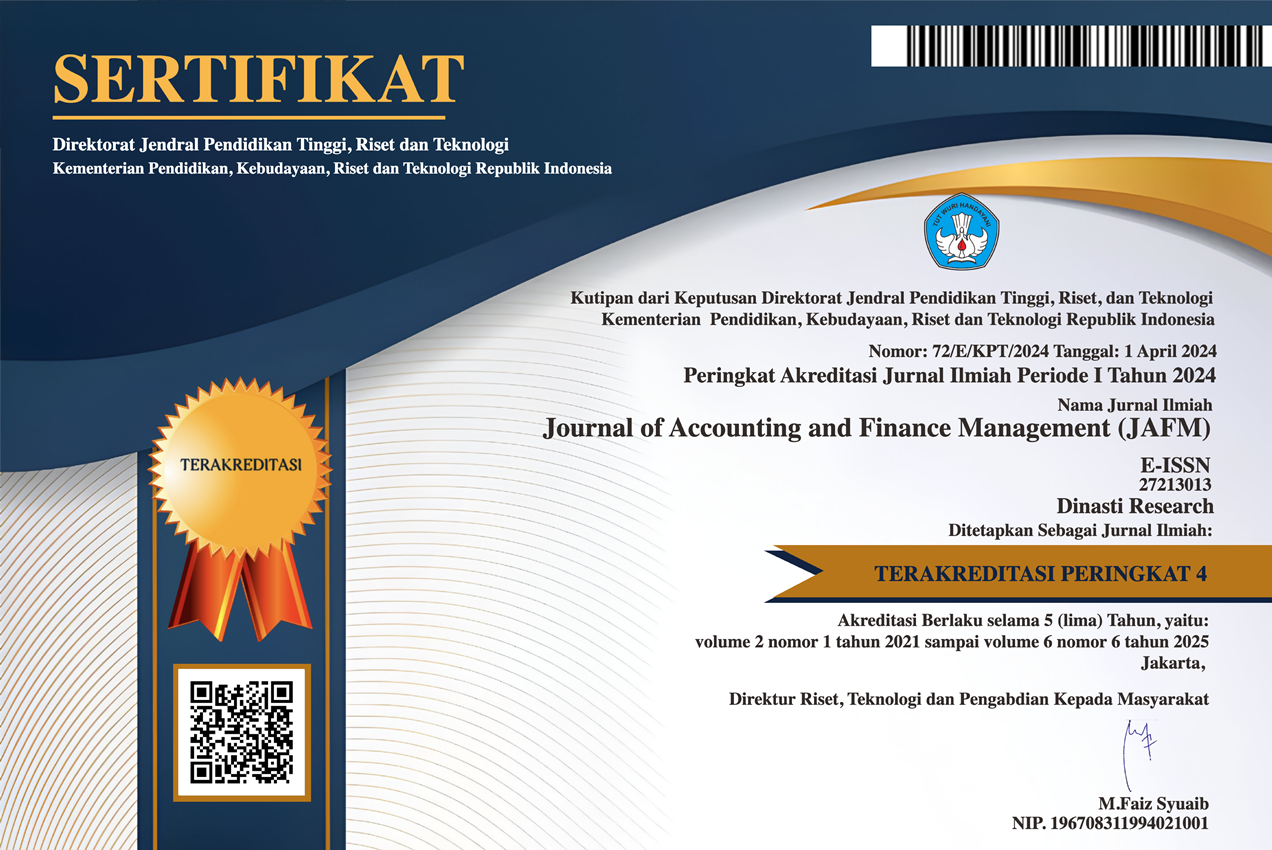Segmentation of Passenger Preferences for Spending Rate and Product Positioning at Terminal 3 Soekarno Hatta International Airport
DOI:
https://doi.org/10.38035/jafm.v6i1.1768Keywords:
Customer Spending, Passenger Characteristics, Segmentation, PreferencesAbstract
The purpose of this study is to understand the segmentation, shopping tendencies, and commercial product preferences of passengers at Terminal 3 Soekarno Hatta Airport. The research design uses a quantitative method as an approach. Data collection was conducted through questionnaires randomly distributed to 385 respondents as a sample, using the Lemeshow formula with a 95% confidence level, a 5% margin of error, and a 50% maximum estimation. The results of the study show that passenger segmentation at Terminal 3 Soekarno Hatta Airport is dominated by solo travelers, families, and business groups. The majority of passengers (62%) tend to shop within the price range of IDR 50,000 – 250,000, with the main product preference being food and beverages such as coffee shops, bakeries, and cafes available in the waiting areas and departure zones.
References
ACI. (2016). ACI Passenger Personas: A new approach to passenger profiling. https://store.aci.aero/product/aci-passenger-personas-a-new-approach-to-passenger-profiling/
ACI. (2018). Guidelines for passenger services at European airports: The Passenger at the Heart of the Airport Business.
ACI. (2023). In the Spotlight: Customer Service. 1. http://www.aci-asiapac.aero/
ACI. (2024). How is the overall customer experience defined in the airport context? https://blog.aci.aero/airport-economics/enhancing-customer-experience-to-boost-non-aeronautical-revenues/#:~:text=Indeed%2C an increase of 1,growth in non-aeronautical revenue.
Bae, W., & Chi, J. (2022). Content Analysis of Passengers ’ Perceptions of Airport Service Quality?: The Case of Honolulu International Airport.
Calista, A., Jenkins, C., & Leung, J. (2022). The Impact of Airport Service Quality on Passenger Satisfaction at the Hong Kong International Airport. University of Wales Trinity Saint David.
Camilleri, M. A. (2018). Market Segmentation , Targeting and Positioning. University of Malta.
George, I., & George, J. (2022). Passengers ’ Perception of Facilities at a PPP Model Airport Passengers ’ Perception of Facilities at a PPP Model Airport. January.
George, R. (2021). Marketing Tourism and Hospitality: Concept and Case. Palgrave Macmillan. https://doi.org/10.1007/978-3-030-64111-5
Harrison, A. (2015). Principles of experience design for airport terminals. In School of Design, Creative Industries Faculty. Queensland University of Technology.
Harrison, A., Popovic, V., & Kraal, B. (2015). A new model for airport passenger segmentation. Journal of Vacation Marketing, 21(June), 237–250. https://doi.org/10.1177/1356766715571390
Kazda, A., Badanik, B., Tomova, A., Laplace, I., & Lenoir, N. (2013). Future airports development strategies. Communications - Scientific Letters of the University of Žilina, 15(2), 19–24. https://doi.org/10.26552/com.c.2013.2.19-24
Kosiba, J. P., Acheampong, A., Adeola, O., & Hinson, R. E. (2020). The Moderating Role of Demographic Variable on Customer Expectation in Airport Retail Patronage Intetations of Travellers. Journal of Retailing and Consumer Service, 54. https://doi.org/10.1016/j.jretconser.2020.102033
Kotler, P., & Armstrong, G. (2018). Principles of Marketing [Global Edition] by Philip Kotler Gary Armstrong. In Pearson (17th ed, pp. 1–734). Pearson Education Limited. www.pearsongglobaleditions.com
Kotler, P., Bowen, J. T., Makens, J. C., & Baloglu, S. (2017). Marketing for Hospitality and Tourism. Pearson Education Limited.
Rafi, S., Firsty, L. R., Athallah, R. V, & Perawati, D. (2022). Airport branding strategy as a determinant of customer experience: Case in Soekarno-Hatta International Airport Terminal 3. Advances in Transportation and Logistics Research, 2622–5788, 770–777. https://doi.org/10.25292/atlr.v2i0
Samosir, J., Purba, O. R., Ricardianto, P., Dinda, M., Rafi, S., Sinta, A. K., Wardhana, A., Anggara, D. C., Trisanto, F., & Endri, E. (2023). The role of social media marketing and brand equity on e-WOM: Evidence from Indonesia. International Journal of Data and Network Science, 7, 609–626. https://doi.org/10.5267/j.ijdns.2023.3.010
SchIffman, L. G., & Wisenblit, J. (2019). Consumer Behavior (12th ed). Pearson Education Limited. http://www.pearsonglobaleditions.com/
Simarmata, J., Prasetiyo, B. F., & Widodo, M. A. (2024). Measuring the Level of Customer Satisfaction at Soekarno Hatta Airport Departure Terminal 3 on the Availability of Customer Favorite Brands. Dinasti International Journal of Digital Business Management (DIJDBM), 5.
Solomon, M. R., & Antonio, C. R. (2024). Consumer Behavior: Buying, Having, and Being (14th ed). Pearson Education Limited. http://www.pearsoned.com/permissions/
Wattanacharoensil, W., Schuckert, M., Graham, A., & Dean, A. (2017). An analysis of the airport experience from an air traveler perspective. Journal of Hospitality and Tourism Management, 32, 124–135. https://doi.org/10.1016/j.jhtm.2017.06.003%0D
Widyawan, A., Rafi, S., & Majid, S. A. (2024). Competitive Strategy To Improve The Performance of Raja Haji Fisabilillah International Airport In 2023. 5(4), 950–959.
Yang, J.-S., Park, J.-W., & Choi, Y.-J. (2015). Passengers’ Expectations of Airport Service Quality: A Case Study of Jeju International Airport. http://www.thejournalofbusiness.org/index.php/site
Downloads
Published
How to Cite
Issue
Section
License
Copyright (c) 2025 Yulizen Bahmi, Mario Handrikovaro, Ade Oktavia Rini, Juliater Simarmata

This work is licensed under a Creative Commons Attribution 4.0 International License.
Authors who publish their manuscripts in this journal agree to the following conditions:
- The copyright on each article belongs to the author(s).
- The author acknowledges that the Journal of Accounting and Finance Management (JAFM) has the right to be the first to publish with a Creative Commons Attribution 4.0 International license (Attribution 4.0 International (CC BY 4.0).
- Authors can submit articles separately, arrange for the non-exclusive distribution of manuscripts that have been published in this journal into other versions (e.g., sent to the author's institutional repository, publication into books, etc.), by acknowledging that the manuscript has been published for the first time in the Journal of Accounting and Finance Management (JAFM).



























